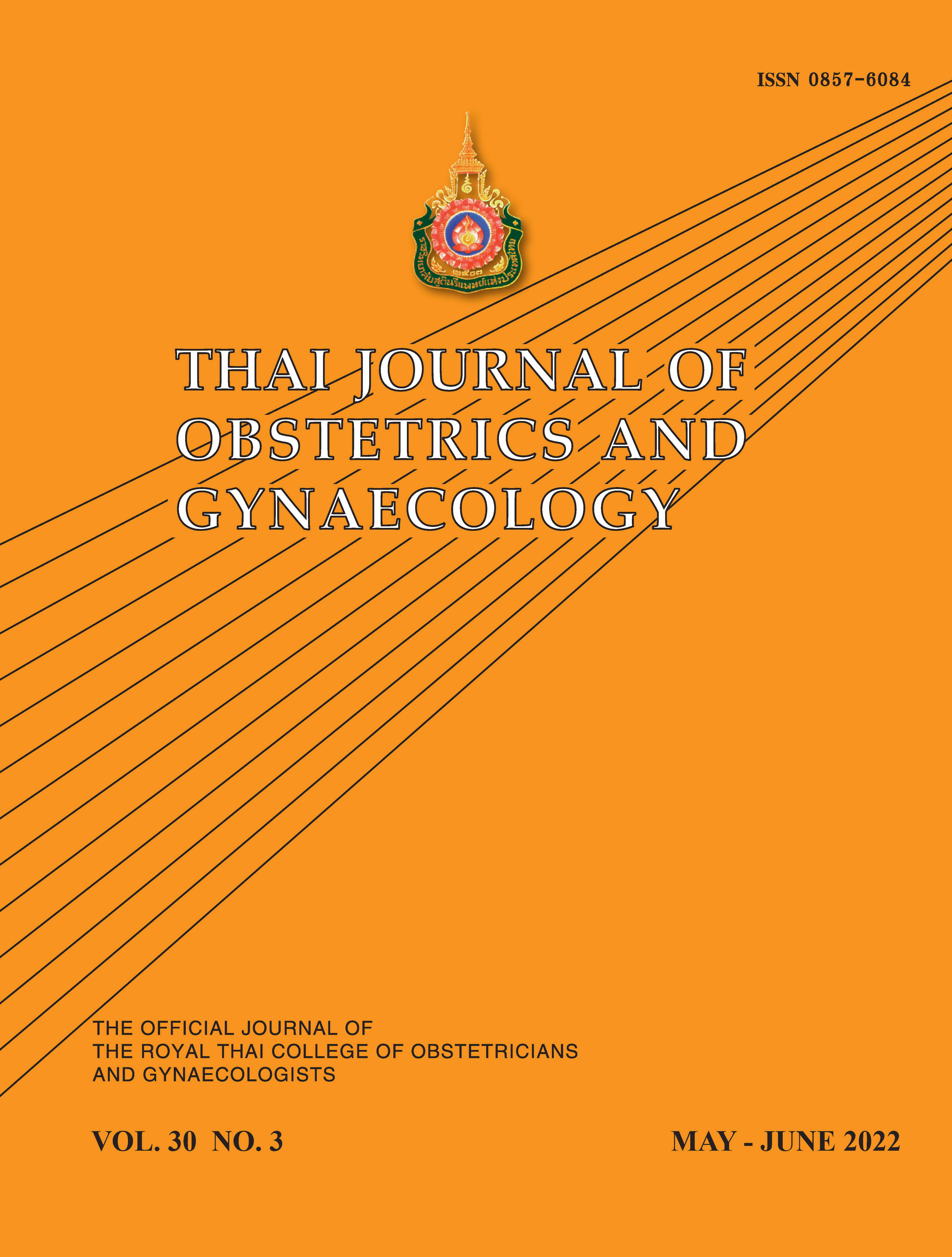The Appropriate Time for Cytology Examination to Screen for Cervical Cancer after Childbirth
Main Article Content
Abstract
Objectives: To compare the rate of satisfactory Pap smear for postpartum checkup between at 6th and 8th week.
Materials and Methods: This was a randomized controlled trial study. The data were collected from the participants who came to postpartum clinic at the 6 and 8 weeks after childbirth in Phrapokklao hospital from February to May 2020. Satisfactory specimen was evaluated as defined by Bethesda reporting system (2014).
Results: The participants (144) who came for examination at 6 and 8 weeks after childbirth were divided into two groups. First group of 72 participants was at 6 weeks postpartum and the second group of 72 participants was at 8 weeks postpartum. From the results, 17 participants (23.6%) with vaginal bleeding were found in the first group, while only 2 (2.7%) in the second group. For the satisfactory of the specimen, the second group had no vaginal bleeding and showed more satisfactory specimen for cytologic screening of cervical cancer result than the participants in the first group (70 (97.3%) vs 55 (76.4%)). The difference between the two groups were statistical significance (p < 0.001).
Conclusion: Timing of postpartum checkup at 8th week was appropriate than at 6th week because of less vaginal bleeding and showed more satisfactory of cytologic screening for cervical cancer. Changing the period of appointment to the same as her neonatal vaccine program schedule also might get benefit from decreasing expense and number of hospital visit.
Article Details

This work is licensed under a Creative Commons Attribution-NonCommercial-NoDerivatives 4.0 International License.
References
Cunningham FG, Leveno KJ, Bloom SL, Dashe JS, Hoffman BL, Casey BL, et al. Williams Obstetrics. 25th ed. New York: Mc Graw Hill 2018: 652-65.
McKinney J, Keyser L, Clinton S, Pagliano C. ACOG Committee opinion no. 736: optimizing postpartum care. Obstet Gynecol 2018;132:784-5.
Schuchat A, Anderson LJ, Rodewald LE, Cox NJ, Hajjeh R, Pallansch MA, et al. Progress in Vaccine-Preventable and Respiratory Infectious Diseases-First 10 Years of the CDC National Center for Immunization and Respiratory Diseases, 2006-2015. Emerg Infect Dis 2018;24:1178-87.
Weiss BD, Senf JH, Udall W. The postpartum Papanicolaou smear. J Am Board Fam Pract 1989;2: 4-9.
Rarick TL, Tchabo JG. Timing of the postpartum Papanicolaou smear. Obstet Gynecol 1994;83:761-5.
Smith LH, Dalrymple JL, Leiserowitz GS, Danielsen B, Gilbert WM. Obstetrical deliveries associated with maternal malignancy in California, 1992 through 1997. Am J Obstet Gynecol 2001;184:1504-12.
Paladine, HL, Blenning CE, Strangas Y. Postpartum care: an approach to the fourth trimester. Am Fam Physician 2019;100:485-91.
Bond S. Caring for women with abnormal papanicolaou tests during pregnancy. J Midwifery Womens Health 2009;54: 201-10.
Suzuki K, Furuhashi M, Kawamura T, Kubo M, Osato K, Yamawaki T. Comparing Papanicolaou test results obtained during pregnancy and post-partum. J Obstet Gynaecol Res 2017;43:705-9.
Nayar R, Wilbur DC. The pap test and Bethesda 2014. Acta Cytologica 2015;59:121-32.
Carty J, Batig A. Postpartum cervical cancer screening adequacy and results: comparison of results 2-3 versus 6-8 weeks postpartum. Obstet Gynecol 2017;129: 57S.
McCrory DC, Matchar DB, Bastian L, Datta S, Hasselblad V, Hickey J, et al. Evaluation of cervical cytology. Evidence Report/Technology Assessment No.5 (Prepared by Duke University under Contract No. 290-97-0014.) AHCPR Publication No. 99-E010. Rockville, MD: Agency of Health Care Policy and Research 1999.
Fetherston WC. False negative cytology in invasive cancer of the cervix. Clin Obstet Gynecol 1983;26:929-37.
Jackson E, Glasier A. Return of ovulation and menses in postpartum nonlactating women: a systematic review. Obstet Gynecol 2011;117:657-62.
Demirjian A, Levy O. Safety and efficacy of neonatal vaccination. Eur J Immunol 2009;39:36-46.
Kelly H, Jacoby P, Dixon GA, Carcione D, Williams S, Moore HC, et al.Vaccine effectiveness against laboratory-confirmed influenza in healthy young children: a case control study. Pediatr Infect Dis J 2011;30:107-11.


